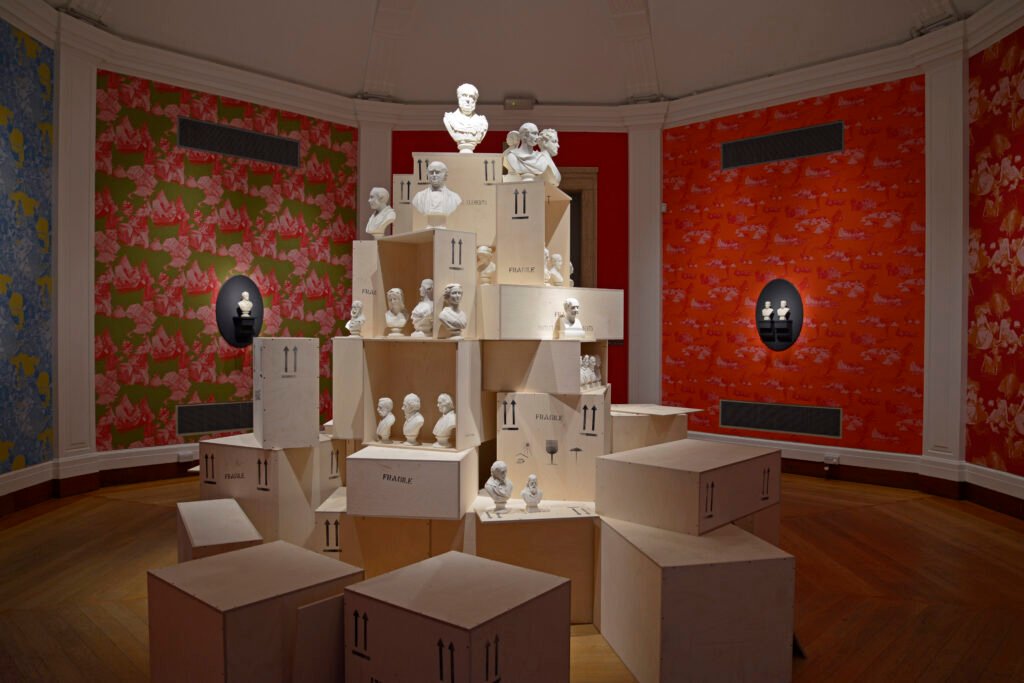What has your career journey been?
I started working in museums and then retrained as a visual artist in the early 2000s. When I was in museums, I was frustrated with how artists could do what curators couldn’t. I wanted to bring my skills as a visual artist to museums, and to open them up using traditional curatorial methods. In 2010, I did a show with Birmingham Museum and Art Gallery called Queering the Museum.
After that, I worked with Leeds University Art Gallery on how we could bring everyday narratives into the art gallery space. More recently, I’ve been working with the Fitzwilliam Museum in Cambridge, exploring how a large group of Parian ware ceramics can talk about British colonialism and genocide overseas.
What skills can curators and artists learn from one another?
As a curator, you feel a sense of needing to have definite answers and needing to be authoritative. As an artist, your role is to give questions and allow space for people to reflect.
What’s interesting is that we will always come back to the same issue with different ways of seeing things. In terms of shared skills, curators tend to be very good at lateral connections, by linking objects with time periods. That is a skill that I have shared in my arts practice, as well as my curatorial practice.

How do you approach your work?
I try to look at the gap between what museums say they do and what they fail to do, and I go from there. No museum is completely encyclopaedic, so I’m interested in where the gaps are, where the silences are and who isn’t being represented.
I then unpick what could be done to help make museums as relevant to as many of us as possible. I value when there are different viewpoints coming from curators and artists – that’s a very positive part of the practice.
What does accessibility mean to you in your work?
I work on intellectual accessibility. I would hope that my exhibitions give enough information to somebody without specialist knowledge in the area to engage. Every exhibition I’ve done has had enough text in it that people don’t feel excluded, or that there’s a barrier to engaging with it.
What is your favourite part of your job?
I love creativity and I like to challenge audiences and make them look at objects in new ways. When I worked with the Victoria and Albert Museum, I explored how figurines represented the binary between butch and camp.
Twisting that slightly makes it playful, and also quite politically engaged, by dealing with the identity of gay men, which is often invisible. That’s the beauty of creativity.




